This week his focus is on the Blanket Octopus
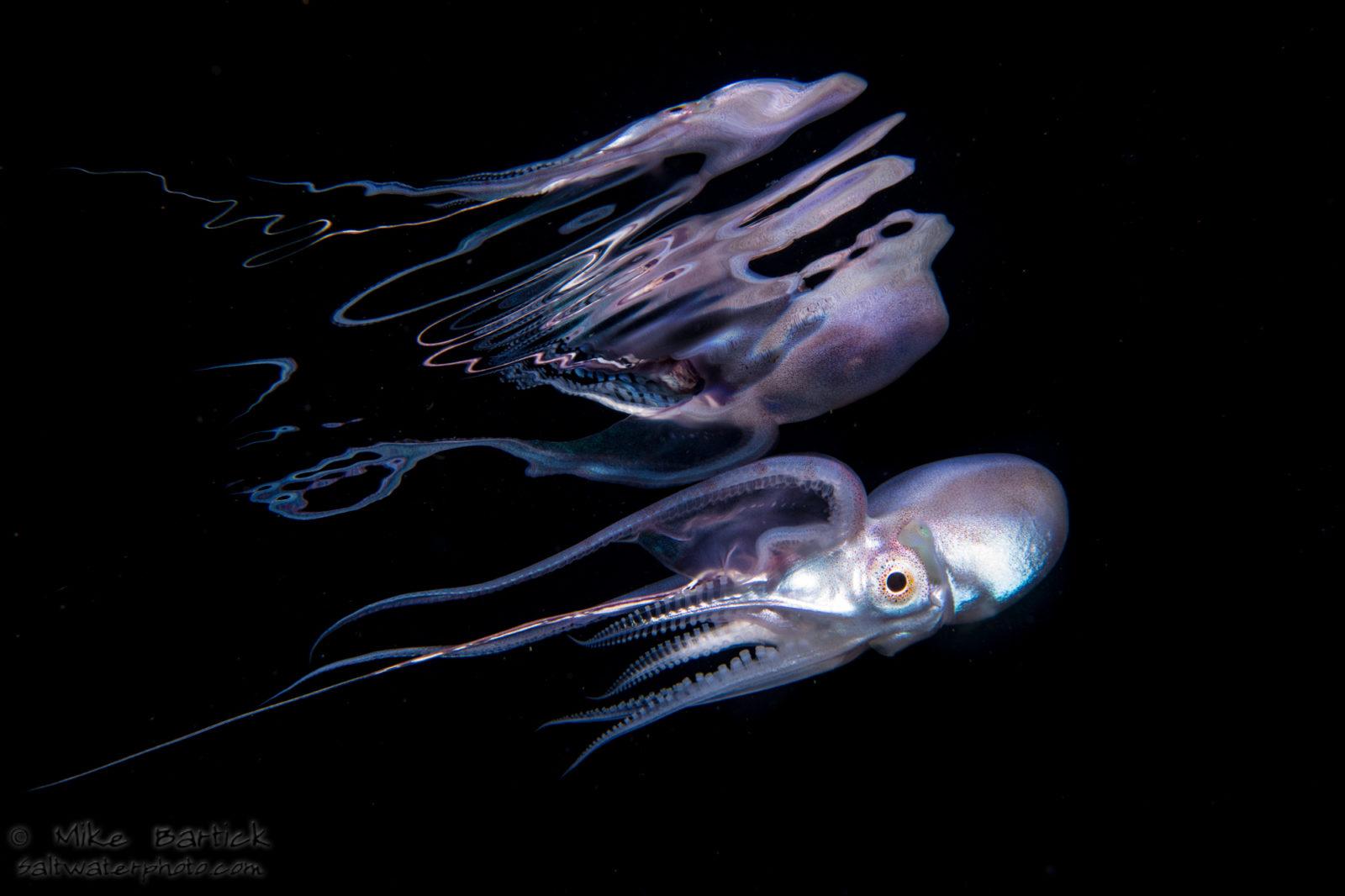
The Blanket Octopus is perhaps one of the most mysterious sea creatures of all times. They are a pelagic octopus that live their entire lifecycle in open ocean which not only makes them hard to find, but even harder to study in their natural habitat. What I have learned through extensive personal observations in the wild, is that the Blanket octopus is a complex animal with intriguing and puzzling behaviours. From the way they mate and reproduce to hunting strategies and defence, one thing is for sure, nothing can truly prepare you for the moment you encounter one.
My first Blanket Octopus (Tremoctopus gracilis) encounter was and still is one of the greatest experiences I’ve had as a diver to date. I was nearing the end of a dive on an evening that nearly left me with a flooded camera. While finning back to the downline, I looked up from the red blinking flood detector on my camera when I saw a huge shadow cross our downline lights. At first, I thought it was a massive jellyfish passing by, then as I got a bit closer I thought it was a fat ray of some kind.
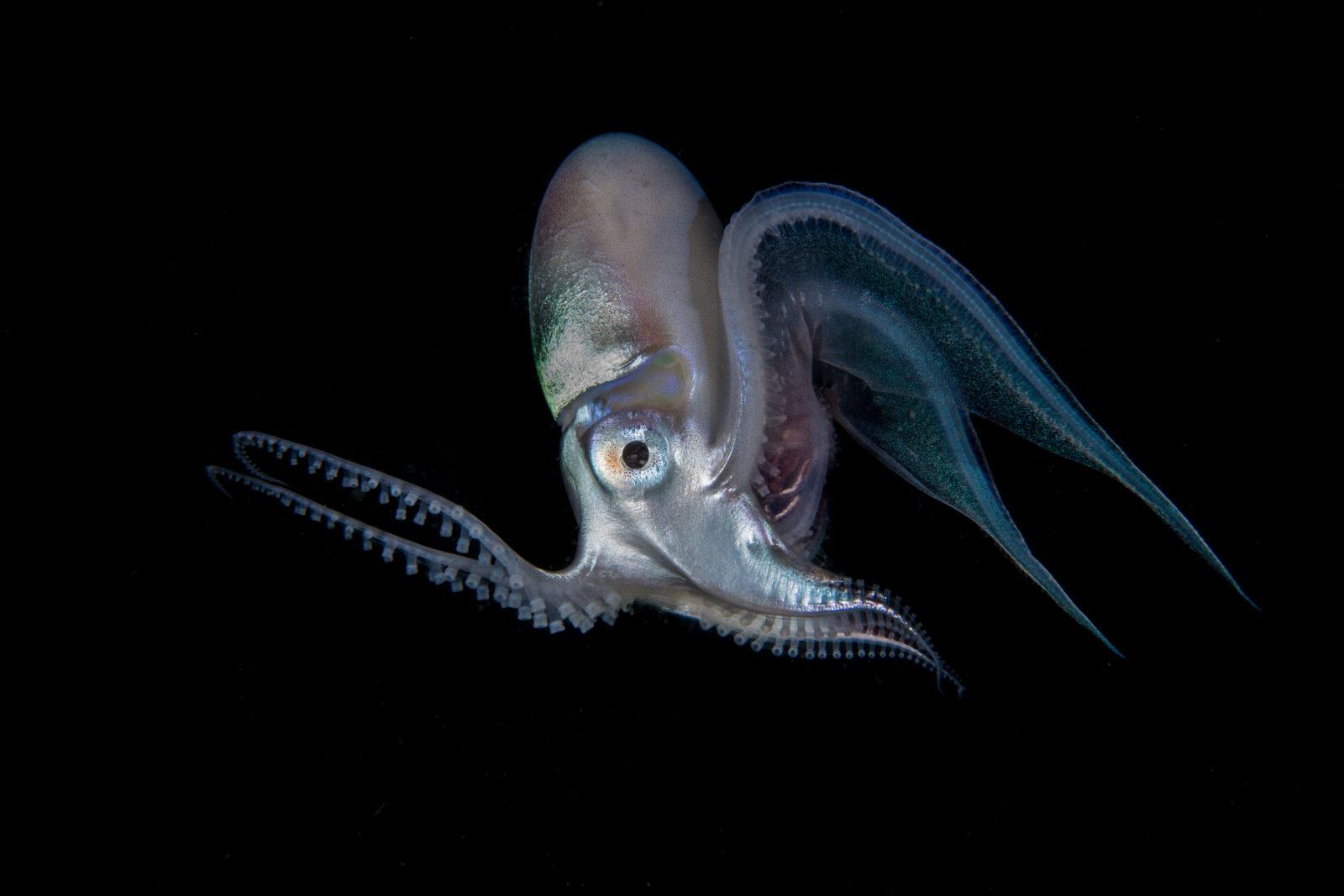
Continuing to kick closer I could begin to make out the colouration and body details, It was at that instant that I knew exactly what I was looking at. It was indeed a 1+ meter Blanket Octopus, perhaps a bit larger. Its head was as big around as a basketball, it’s arms were pulled in and made up the rest of the shape that I mistook as a ray. I was at approximately 15 meters of depth and finning hard to keep up and trying to get out in front of it. As I did, its massive purple- green blanket, began to unfurl and open.
In this situation and shooting with a 60mm lens, you try everything you can to get a shot. I began finning backwards to give myself some space but the Occy kept coming straight towards me. I did everything I could to get a shot, any shot. No one would believe me if I only came back with a story. I shined my powerful hand torch back towards the downline hoping one of my friends would also see me and come down to join.
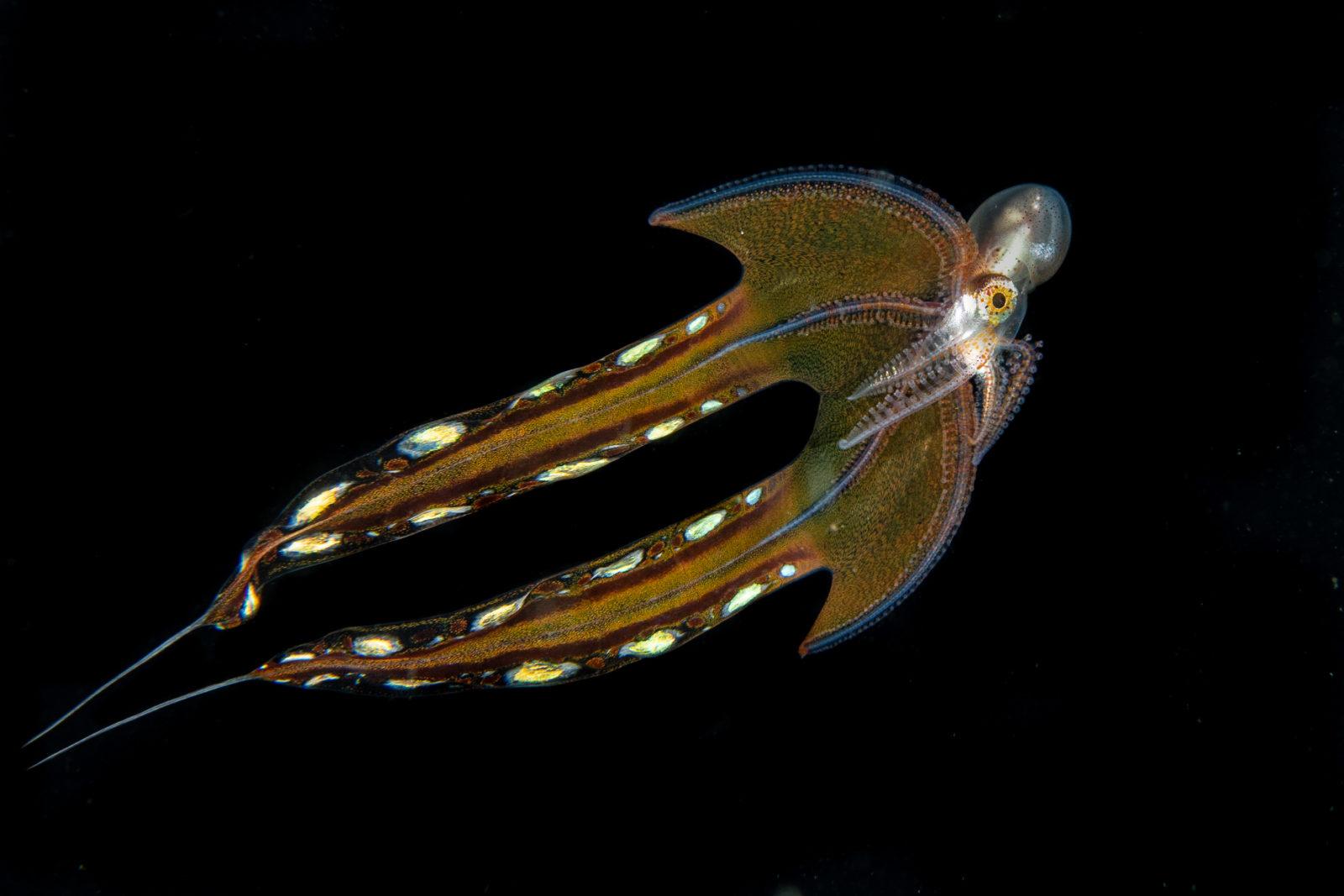
The octopus was casual and orbited our downline, effortlessly moving about and highly curious of me. Meanwhile, I was frantic with a camera that was flooding and only a story to tell. Looking up I finally saw my buddy arriving to join me and the two of us had our first unforgettable blanket octopus experience of a lifetime together. Out of air, out of time, we reluctantly surfaced and my camera survived! also check Underwater Photography by Simon Lorenz
Later that evening and still buzzing with excitement from the dive, I was downloading and reviewing the images when I got a second shock. Our “blanky” was obviously a female as she was also carrying eggs. WOW! I yelled, Oh my god, this is *#*# insane! It was 3:00 am and I'm sure I woke up my neighbours..
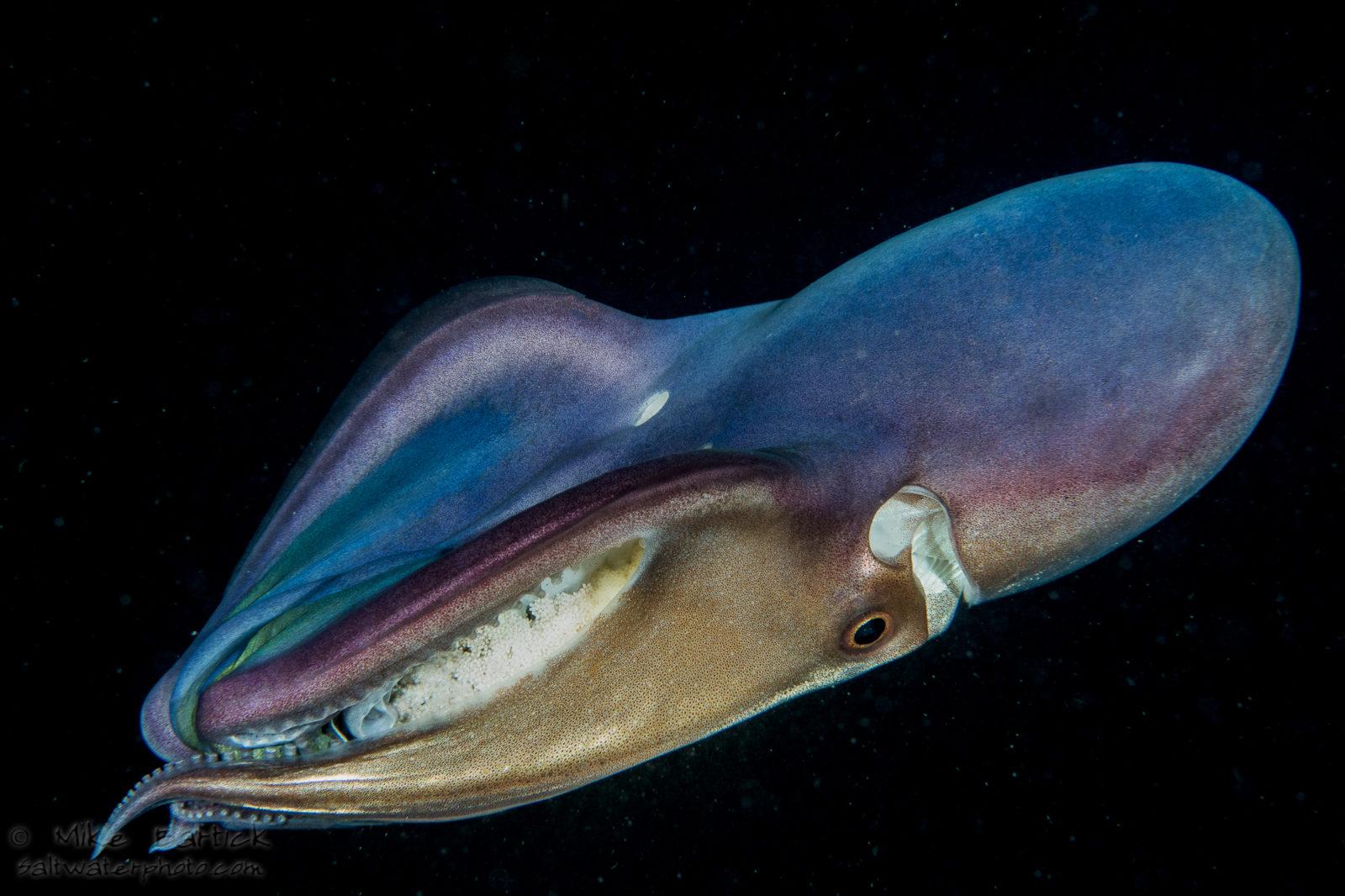
The Blanket Octopus Contains 4 known species:
- T. gelatus, a gelatinous deep water Tremoctopus, cosmopolitan and found in tropical and temperate waters
- T. robsoni, Known from the waters off of New Zealand
- T. gracilis, Palmate octopus-Found in the Indo-Pacific Region
- T. violaceus, violet colored- Lives in the Atlantic
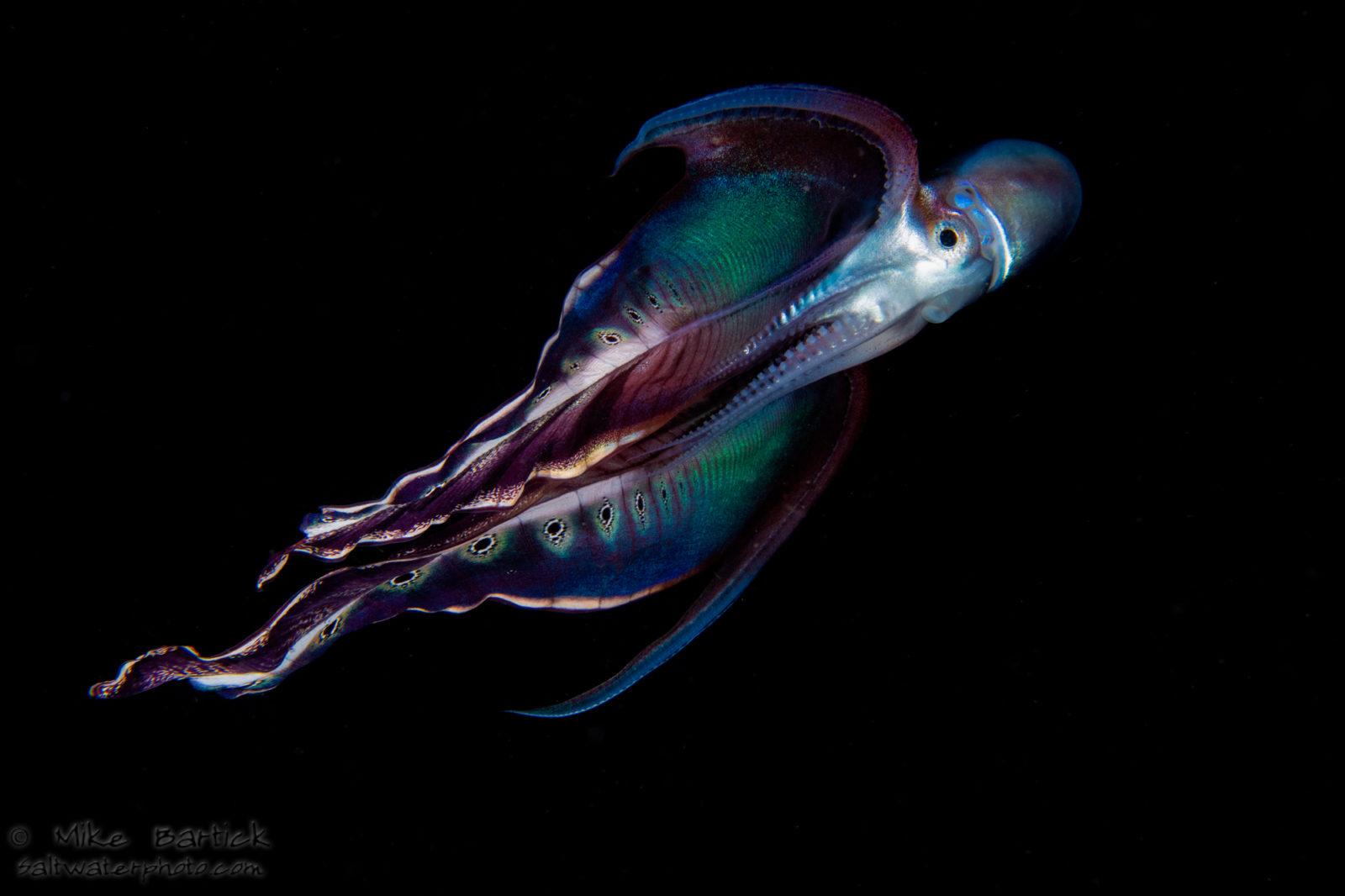
The four different octopus can be found in almost all of the planets oceans but each inhabit a different region, sans the polar regions. Their lifecycle can last up to 5 years and have been observed hunting in the same area for an extended period of time.
Being a pelagic animal means they don’t make a burrow or forage on the sand like other octopuses do. These Octopus mate, hunt, feed and thrive in the open water and can roam from the depths of the “dark zone” (200+meters) to the surface, truly master’s of their open ocean domain. The blankets that we encounter are described as the T. gracilis, the females can be pink and silver with a green hue, the blanket is ocellated like a peacocks feathers.
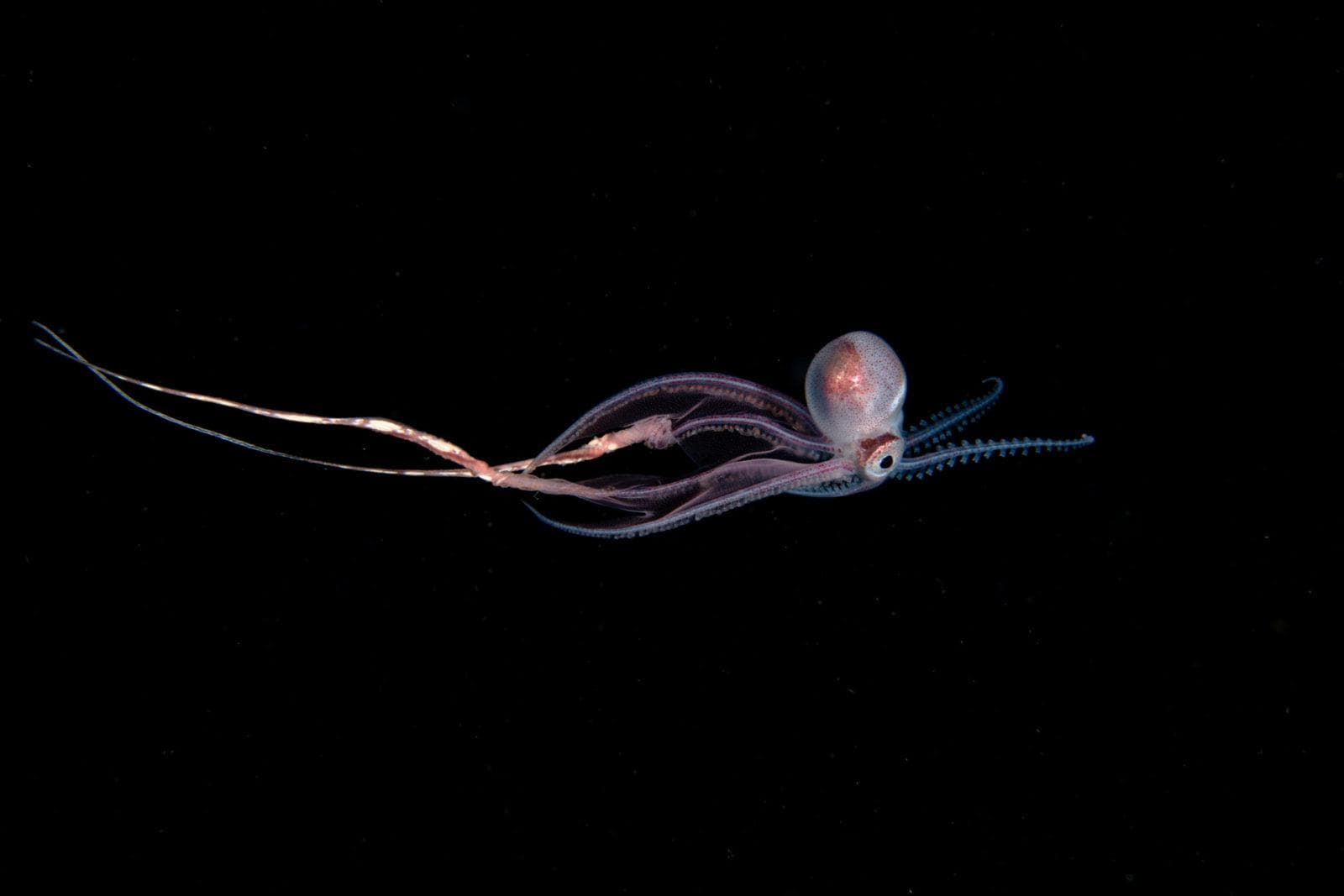
Unique in appearance and unique in behaviour the Tremoctopus are immune to the deadly nematocysts of many cnidarians including the Man O’war jellyfish. It is reported that juvenile Tremoctpus rip the stinging tentacles from the jellyfish then holds them with their lateral arms, whipping them about to sting their prey and perhaps to protect themselves. Many photos show the trailing tentacles and clearly illustrate that this is indeed a common behaviour.
Oddly enough, we don’t have a population of Man O’war jellyfish in our bay which leads me to assume that they aren’t selective and will use the tentacles of any venomous jellyfish.
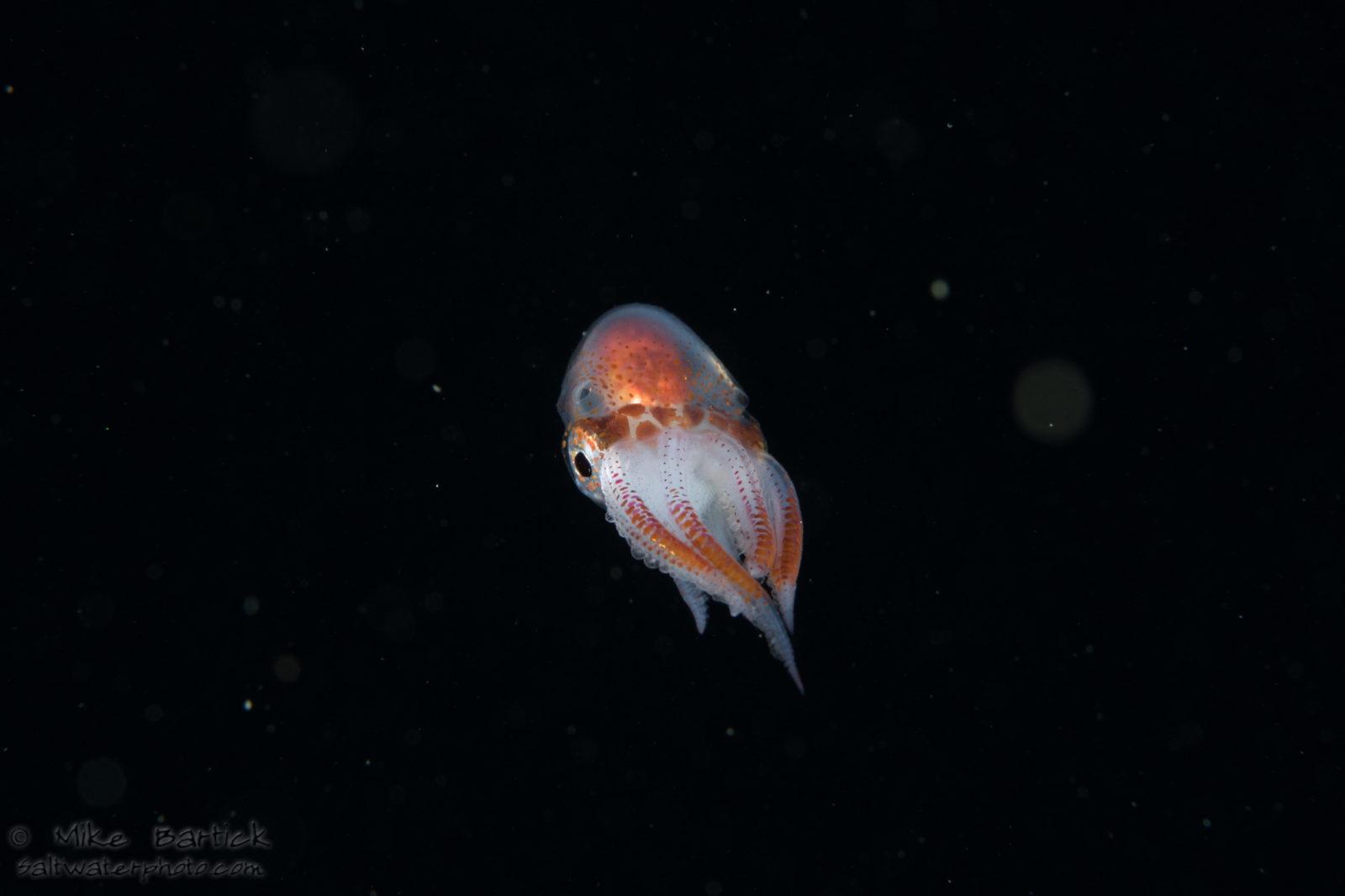
The sexual behaviour is also quite interesting. The male of the species exhibits the highest degree of dimorphism than any other animal yet to be discovered. The female can measure up to 2 meters in length while the males only reach a size 2 centimetres, size and weight ratios differ as much as 10,000 times. Male Tremoctopus use a specialized arm called the hectocotylus like other male octopus which contains its sperm pack.
The male-only needs to touch the female with this specialized arm as it instantly sticks to her and snaps off, perhaps without her even knowing. The arm then creeps down or somehow finds its way into the ovum of the female where she crushes it, releasing the sperm and fertilizing her eggs when the time is right. Females lay their eggs in strands, fertilizing the each egg as they pass through the ovum. The female then carries her brood until they hatch.
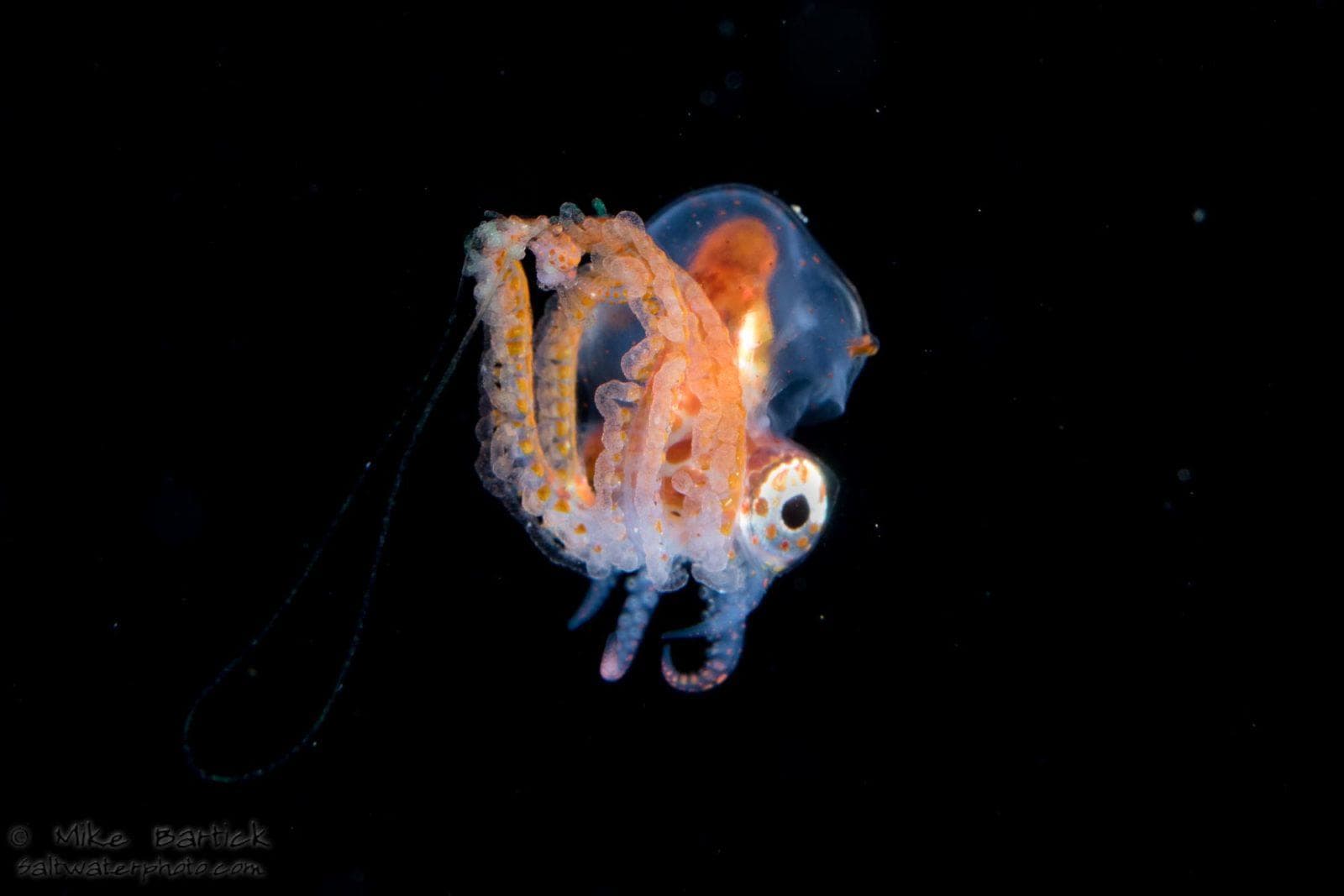
Sadly after the male completes his mating duties dies. However, the female still has a long life ahead, brooding and caring for her eggs until she finally dies from starvation much like other Octopus. Research says the eggs are kept in a “sausage-shaped calcareous secretion” but I couldn't make that out from my photos.
The Tremoctopus gets its common name from the blanket that it can quickly unfurl and retract. When fully extended they resemble “Rocky, the flying squirrel” and fly through the water in much the same manner. The texture of the blanket looks like an exaggerated version of the webbing that a common octopus has and uses to web over their prey when hunting. However, these guys deploy the blanket to make themselves look bigger and perhaps to hunt and catch crustaceans or other cephalopods like the paper nautilus.
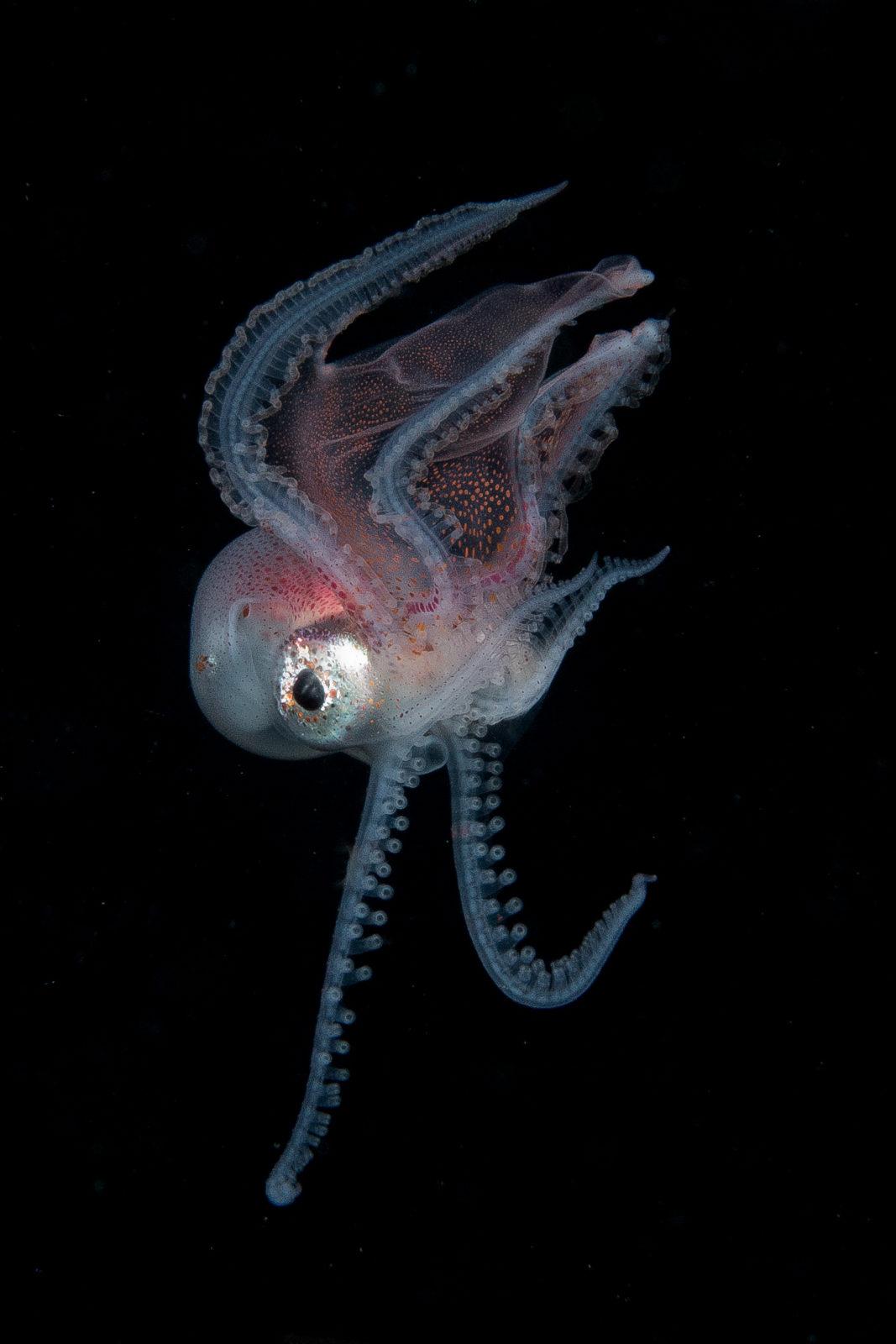
They can also detach their webbing to ensnare a would-be predator or to evade as well as ink. The web is attached to the 3rd and 6th arms of the female, palmated by the 4th and 5th arm. They will snap their arms outward repeatedly, tightening the blanket as it moves through the water column.
There is nothing quite like encountering one of these majestic animals in the wild. Its baffling behaviours, curiosity and stunning colourations make the Blanket Octopus an ultimate photo op and one of my favourite backwater subjects.
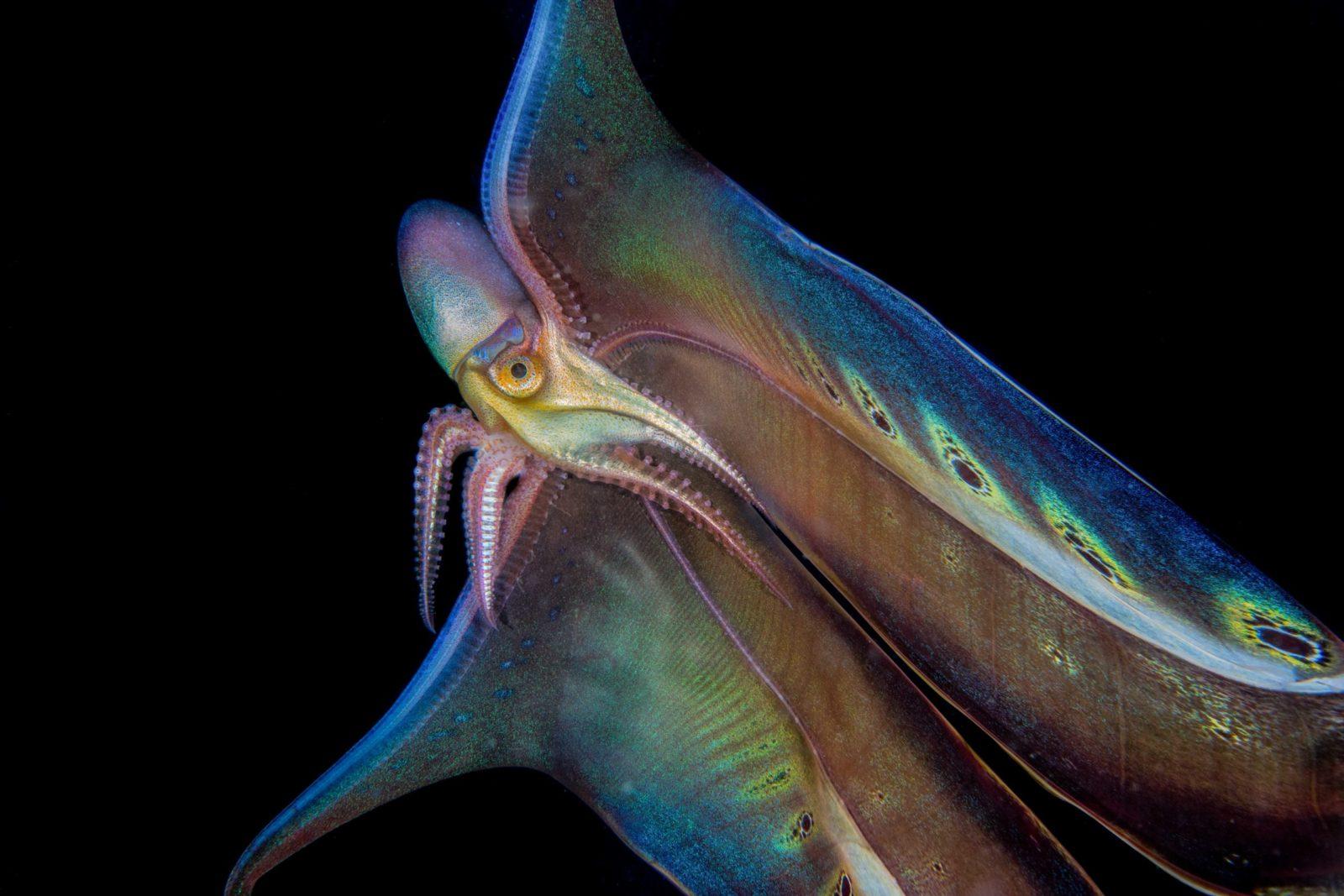
Now get out there and have an adventure! Article Written By Mike Bartick, Saltwater Photo
Imaging Credit: Mike Bartick, Saltwater Photo
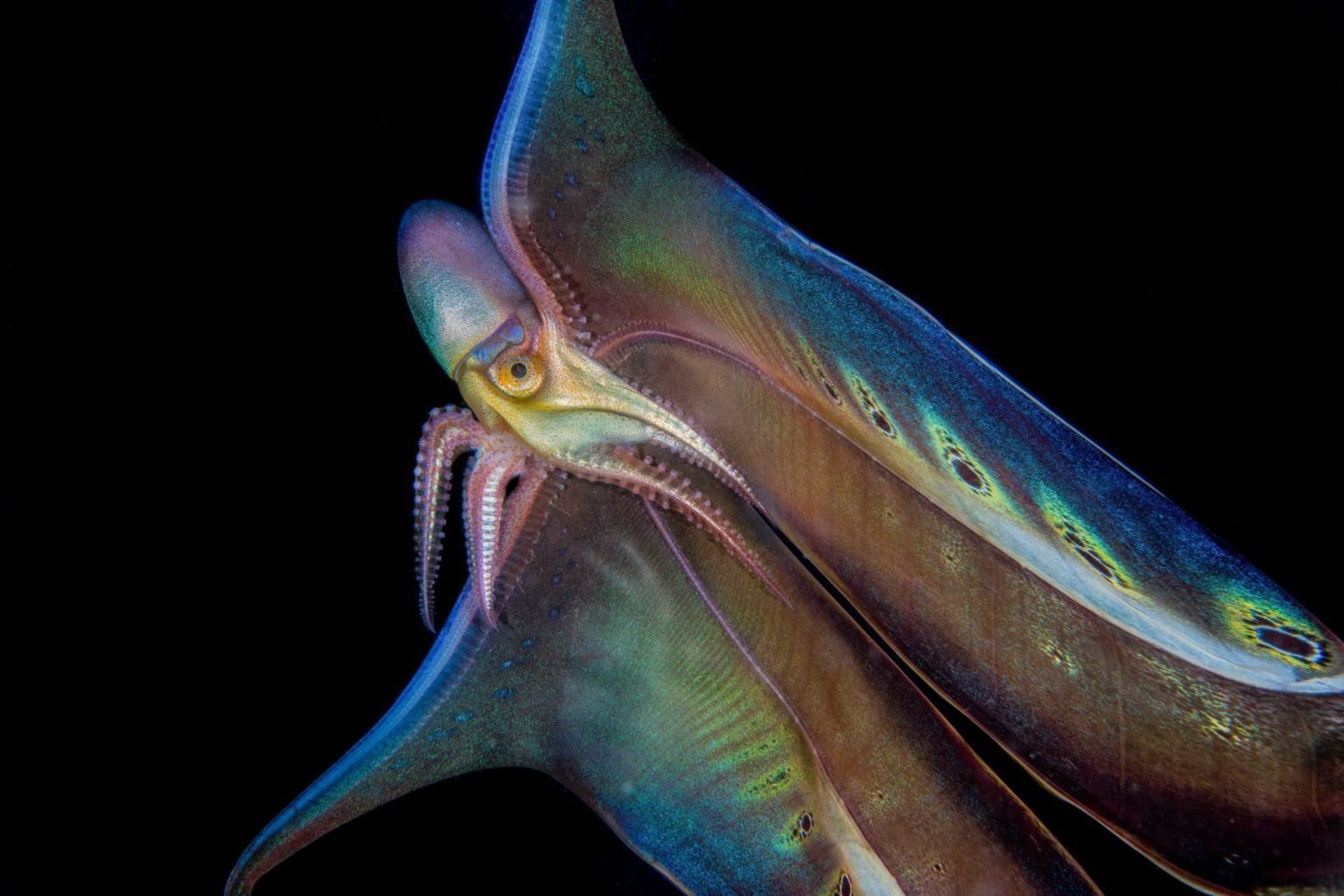







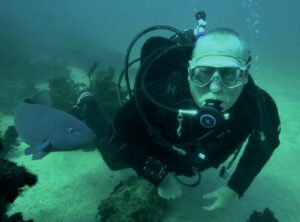
Awesome article. Highly informative with stunning imagery.
this is a perfect article, thank you.